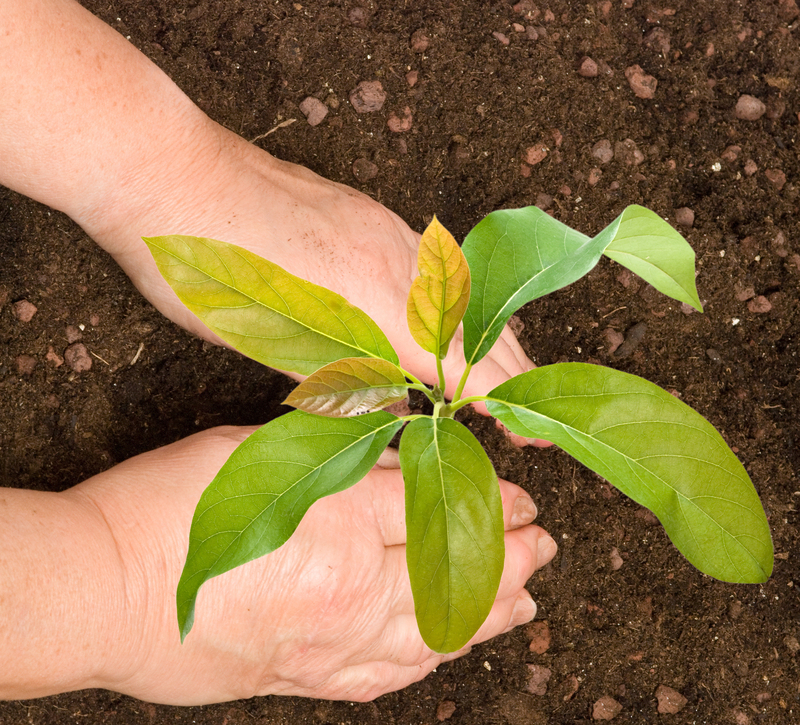Steps to a Vibrant and Engaging Garden for Kids
Posted on 21/06/2025
Steps to a Vibrant and Engaging Garden for Kids
Gardening is more than just a pastime--it's a joyful educational experience that nurtures patience, responsibility, and creativity. For families and educators seeking to foster a love for nature, creating a vibrant and engaging garden for kids is one of the most rewarding projects. In this comprehensive guide, you'll discover step-by-step instructions to transform any outdoor space into a thriving, magical place where children can play, learn, and grow.
Why Create a Kid-Friendly Garden?
A kid-friendly garden is more than just an attractive patch of flowers or vegetables. It's an interactive environment where children can explore their senses, discover the wonders of nature, and develop vital skills. Here are just a few reasons to consider starting a garden for kids:
- Physical activity: Gardening keeps little bodies moving and healthy.
- Educational opportunities: Teach science, math, and environmental stewardship outdoors.
- Creativity boost: Let imaginations soar with colors, textures, and themed areas.
- Emotional growth: Builds confidence, patience, and responsibility.
- Family bonding: Working together in the garden brings everyone closer.

Essential Steps to a Vibrant and Engaging Garden for Kids
Whether you have a small balcony or a spacious backyard, these steps will help you design and build a lively children's garden that delights and educates:
1. Plan Your Space with Kids in Mind
The first step in establishing an engaging garden for children is assessing the space you have. Consider your garden's size, sunlight, and accessibility. Involve your kids in the planning process--they're more likely to cherish a space that they helped design!
- Survey the area to check for hazards or unsuitable spots.
- Let children offer layout ideas--use chalk or string to mark possible beds, paths, or play areas.
- Ensure there's safe, easy access for small hands and feet.
- Think about seating: a small bench or stumps for storytelling or quiet time.
2. Choose the Right Themes and Features
A themed kids' garden can increase engagement and learning. Great themes might include:
- Butterfly or pollinator garden: Plant flowers that attract butterflies and bees.
- Pizza garden: Grow tomatoes, herbs, and peppers for making home-grown pizza.
- Rainbow garden: Choose plants in a spectrum of colors for visual learning.
- Edible garden: Encourage healthy eating by growing kid-friendly veggies and fruits.
Add fun features like a fairy house, bug hotel, or bean teepee to enhance play and stimulate curiosity.
3. Select Safe, Exciting, and Sensory Plants
One of the most critical elements in a vibrant children's garden is the plant selection. Opt for non-toxic, easy-to-grow varieties with sensory appeal--think bright colors, interesting textures, and delicious aromas.
- Colorful flowers: Marigolds, zinnias, sunflowers, nasturtiums
- Fragrant herbs: Mint, basil, lavender
- Edible offerings: Strawberries, cherry tomatoes, snap peas, lettuce
- Touch-friendly plants: Lamb's ear, ornamental grasses, soft moss
Always avoid toxic plants such as oleander, foxglove, or nightshade. If unsure, consult your local nursery for guidance on safe garden plants for kids.
4. Incorporate Playful Garden Structures
Kids love spaces they can call their own. Incorporate simple structures for adventure and creativity:
- Willow dens or tunnels for hide-and-seek fun
- Raised beds for manageable growing spots
- Stepping stones for hopping or guiding pathways
- Sand or mud kitchens to encourage messy, imaginative play
These elements help create an engaging garden for kids that promotes both active and quiet play.
5. Make Garden Tasks Simple and Fun
Assign age-appropriate garden chores for children to make maintenance enjoyable:
- Watering: Let kids use child-sized watering cans or spray bottles.
- Weeding: Teach to identify weeds with a scavenger hunt twist.
- Harvesting: Encourage tasting and collecting ripe produce and seeds.
- Decorating: Paint plant markers, pots, or garden stones.
Rotate jobs often to maintain interest and prevent boredom.
6. Provide Child-Friendly Tools and Materials
Invest in kid-sized gardening tools made of sturdy, safe materials. A basic set might include:
- Small trowel
- Hand fork
- Mini rake or hoe
- Watering can
- Protective gloves and sun hats
Personalize tools with stickers or paint so kids feel ownership and pride in their work.
7. Integrate Learning and Exploration
A children's educational garden introduces countless teaching moments:
- Measure plant growth and chart results for math practice
- Label plants for reading and memory skills
- Discuss beneficial insects and natural life cycles
- Experiment with composting and recycling to foster environmental values
Invite them to draw or journal about their observations--this makes the garden both educational and deeply personal.
8. Encourage Wildlife and Ecosystem Health
Foster a healthy, inspiring environment by welcoming beneficial wildlife:
- Install bird feeders and baths for watching feathered friends
- Set up insect hotels or log piles for bugs and beetles
- Plant a mix of native flowers and shrubs to support local pollinators
Teach kids the importance of every organism in the garden's food web. This respect for all living things makes for a truly vibrant and engaging garden.
9. Respect Seasons and Routine
A successful children's garden adapts to the natural cycle:
- Plan for spring planting and summer harvesting
- Incorporate fall cleanup and composting activities
- Introduce winter crafts, garden planning, or simple indoor plant care
Mark changes with special events like a "first harvest day" or a "garden sleepover" to keep enthusiasm high all year.
10. Celebrate Successes--Big and Small!
Remember to acknowledge every achievement, whether it's growing a giant sunflower or mastering the art of watering. Celebrate with:
- A family meal using garden produce
- A special garden party with friends
- Certificates or badges for new skills
Recognizing hard work builds self-esteem and encourages a lifelong love of gardening.
Creative and Fun Garden Activities for Kids
Sustain your children's garden enthusiasm with ongoing activities:
- Nature scavenger hunts: Seek colorful leaves, insects, or hidden treasures.
- Garden crafts: Make sun catchers, wind chimes, or painted flowerpots.
- Storytime outdoors: Share nature-themed books or create DIY fairy tales under a shady tree.
- Garden picnics: Enjoy snacks or lunch amid fresh scents and colors.
Rotate activities to suit changing seasons and keep the garden truly engaging and vibrant.
Tips for Long-Term Success in a Kids' Garden
- Be patient and flexible--not everything will go as planned!
- Let children take the lead in choosing plants and making decisions.
- Model respect for nature and curiosity about how things grow.
- Invite friends or siblings for group gardening fun.
- Remember that mess means learning is happening!

How Gardens Benefit Children's Development
Research shows that gardening offers unique developmental perks for kids:
- Physical: Builds fine and gross motor skills through digging, planting, and watering.
- Cognitive: Encourages observation, problem-solving, and scientific thinking.
- Social: Teaches teamwork, sharing, and communication with others.
- Emotional: Cultivates mindfulness, patience, and pride in achievements.
Conclusion: Start Your Vibrant and Engaging Kid's Garden Today
A little planning goes a long way in achieving a vibrant and engaging garden for kids. By following these steps--planning with your child, choosing safe and sensory-rich plants, integrating playful structures, and encouraging ongoing exploration--you'll create a welcoming outdoor classroom where kids thrive. Let curiosity, color, and creativity guide you, and soon your child's garden will blossom into a cherished haven of learning and laughter.
Ready to get started? Grab your spades, rally your budding gardeners, and embark on a magical gardening adventure together!

